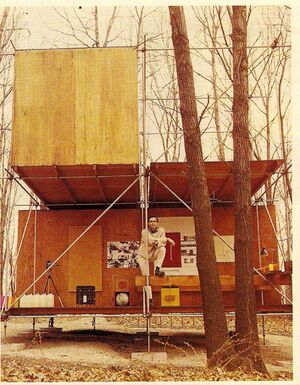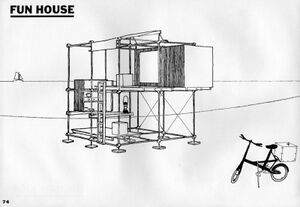Scaffold homes: Difference between revisions
No edit summary |
No edit summary |
||
| Line 34: | Line 34: | ||
Making major changes to a parcel of land typically requires approval and a permit, with an associated cost. We hope to minimize complication by designing a structure which requires little or no modification to the land itself, and which provides it's own services in a small footprint. | Making major changes to a parcel of land typically requires approval and a permit, with an associated cost. We hope to minimize complication by designing a structure which requires little or no modification to the land itself, and which provides it's own services in a small footprint. | ||
Limiting the structure's shadow to < 18.5m^2 (200sqft) allows it to fit within as many city codes and ordinances as possible. Some jurisdictions may allow for additional modules. | |||
* [https://www.c-head.com/product-page/basic-c-head-in-matte-white C-Head composting toilet] | * [https://www.c-head.com/product-page/basic-c-head-in-matte-white C-Head composting toilet] | ||
Revision as of 00:56, 16 April 2022
| Tools: | Wrenches |
|---|---|
| Parts: | Scaffolding, Water collection systems, Water filters, Showers, Bathrooms, Power trailers, Kitchens, Batteries |
| Techniques: | Tri joints |
Introduction
Scaffolding, also called scaffold or staging, is a temporary structure used to support a work crew and materials to aid in the construction, maintenance and repair of buildings, bridges and all other man-made structures. Scaffolds are widely used on site to get access to heights and areas that would be otherwise hard to get to.
Challenges
- Permitting
- Foundations
- Sewer
- Water
- Power
- HOAs
Approaches


Making major changes to a parcel of land typically requires approval and a permit, with an associated cost. We hope to minimize complication by designing a structure which requires little or no modification to the land itself, and which provides it's own services in a small footprint.
Limiting the structure's shadow to < 18.5m^2 (200sqft) allows it to fit within as many city codes and ordinances as possible. Some jurisdictions may allow for additional modules.
- C-Head composting toilet
- 300 Gallon Black Above Ground Holding Tank
- Second-hand solar panels (5kW+)
